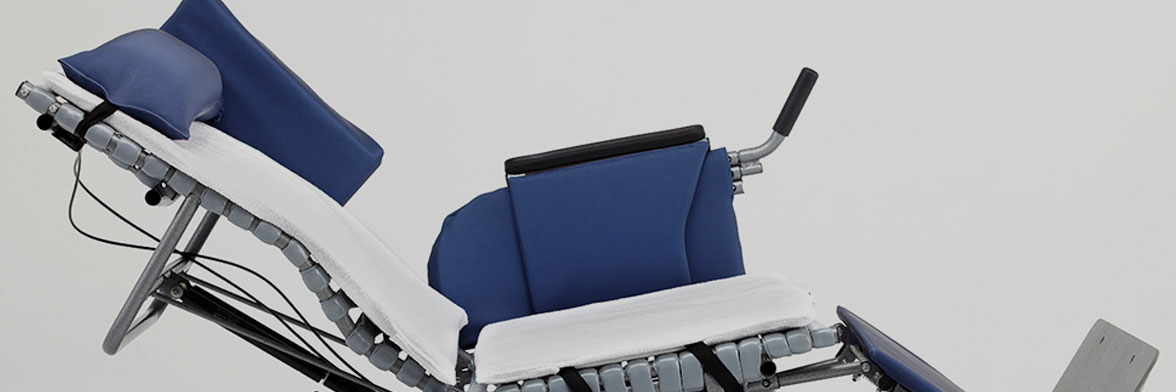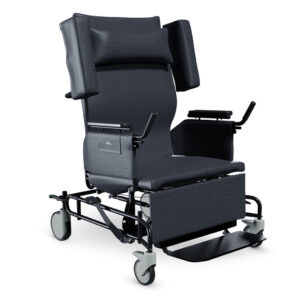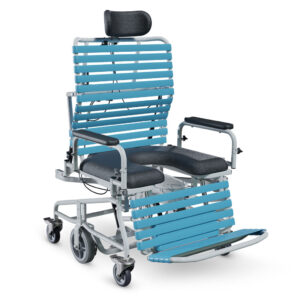The Best Bariatric Wheelchairs
It can be tough to keep bariatric wheelchair users comfortable and well-positioned during activities of daily living. Obesity can severely affect mobility and can make getting out of bed an uncomfortable experience. That’s why Broda offers the full continuum of care for users up to 800 lbs.
Our wheelchairs provide advanced positioning features and mitigate the risks of injury for both the user and caregiver. Broda bariatric wheelchairs minimize injury, wounds, and infections, while providing dignity and mobility to the user. We can build a bariatric wheelchair fit the individual user, with a wide range of sizes available. We also offer an optional curved back support to accommodate and support the gluteal shelf. With Broda, bariatric individuals can experience improved mobility and quality of life.
Our Bariatric Wheelchair Recommendations
Improved Mobility During Daily Living
Bariatric wheelchair users can increase independence in activities of daily living (ADLs) such as self-feeding, dressing, grooming, etc., when they use a Broda wheelchair. Our Revive Bariatric Shower Commode, for example, makes the hygiene routine easier for people weighing up to 800 lbs. People who use Broda wheelchairs and shower commodes often experience improved mobility and functionality, which allows them to live fuller, more independent lives.
Creating Comfortable Seating with Bariatric Wheelchairs
Our goal is to make every patient comfortable in their wheelchair. That’s why we created our one-of-a-kind Comfort Tension Seating® system. Unlike conventional sling-style wheelchairs, Comfort Tension Seating® is made up of individual straps that mold to the user’s body and suspend their weight across multiple points. This unique seating system relieves pressure better than a typical cushion by suspending the user’s weight evenly across multiple points, rather than a solid seating surface.
Extremely obese individuals are much more likely to develop pressure ulcers than those who are of normal weight.1 Deep tissue injuries can occur with a lack of mobility. By using the Vanguard Bariatric Wheelchair, you can lower the user’s risk of pressure injuries. In turn, this reduces painful outcomes and costly treatment expenses.
“No-Lift” Positioning Features
Caregivers can also reduce pressure injury risk by frequently repositioning the user to redistribute pressure. While it can be difficult to reposition an obese individual, Broda bariatric wheelchairs remove those barriers. Our positioning features are endlessly adjustable and are easily operated by a single caregiver, no matter the user’s weight. Simply squeeze the designated handle to recline the wheelchair. Special, pressurized gas cylinders make it easier to lift and lower the occupant to various angles of recline. The tilt functionality is operated by a foot pedal, which can be pumped to position the wheelchair user to the desired tilt angle.
Increase Time Spent Out of Bed
Getting a person from their bed to their wheelchair and vice versa can be challenging. Our wheelchairs make transfers easy with arm supports, leg supports, and shoulder supports that can be easily removed and set aside, out of the way. Our Vanguard Bariatric Wheelchairs also feature “stand-assist” handles for the occupant to steady themselves during sitting and standing. With a bariatric wheelchair from Broda, a user can enjoy more time out of bed engaging with their environment.
References:
- Hyun, S., Li, X., Vermillion, B., Newton, C., Fall, M., Kaewprag, P., Moffatt-Bruce, S., & Lenz, E. R. (2014). Body mass index and pressure ulcers: improved predictability of pressure ulcers in intensive care patients. American journal of critical care : an official publication, American Association of Critical-Care Nurses, 23(6), 494–501. https://doi.org/10.4037/ajcc2014535


